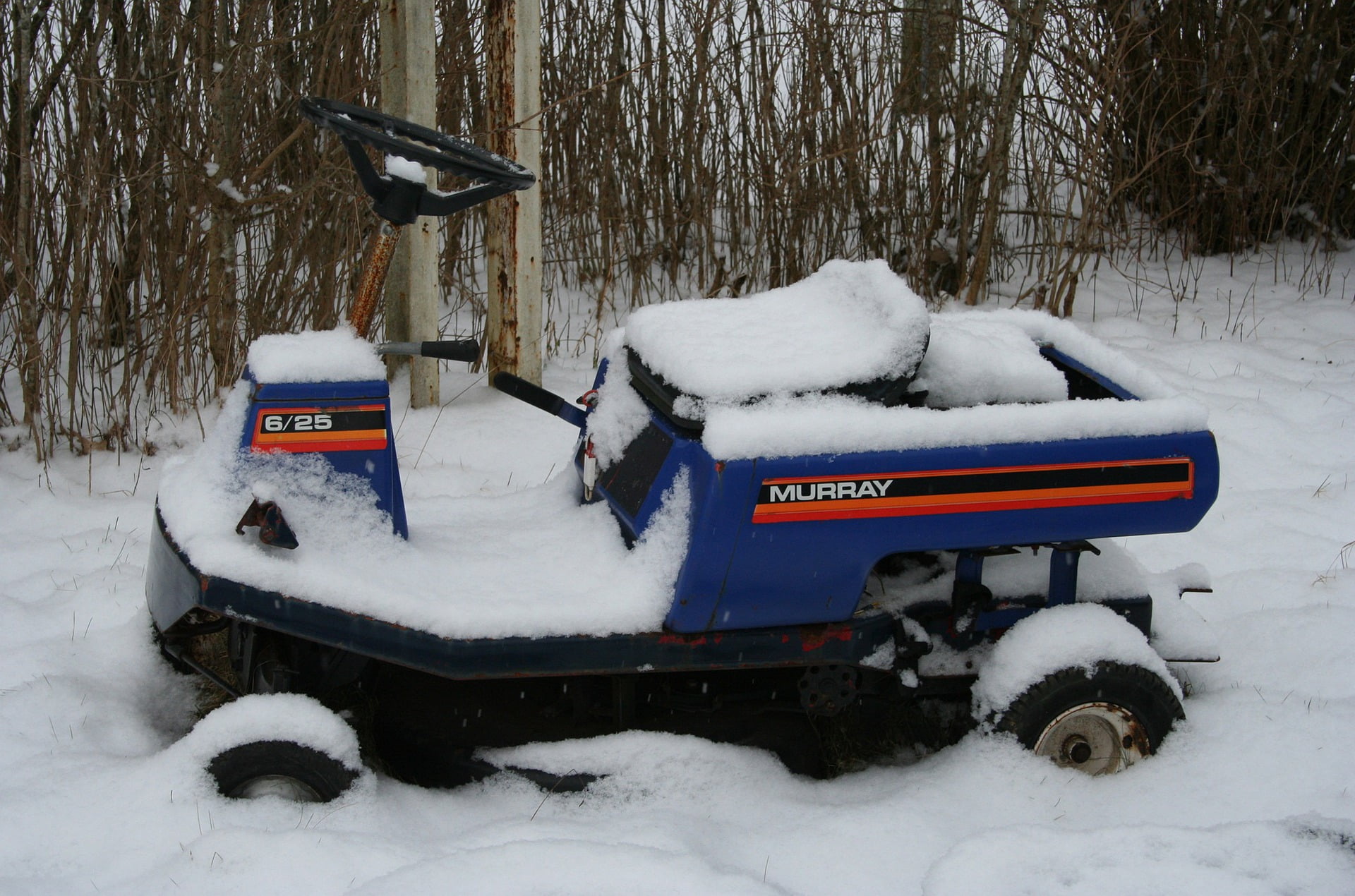A seized riding lawn mower engine is the bane of any small engine enthusiast. Oftentimes it’s a condition that’s spoken of akin to the death of the machine. While it’s certainly true that a seized riding lawn mower engine can be insurmountable, there are a few things that we can try prior to giving up.
What is a Seized Engine
Simply put, a seized engine is one that is frozen in place. For some reason or another, the internal components are stuck in position and they are not moving as they should. The first thing I check when looking to buy a new (used) riding lawn mower – even one that doesn’t work – is whether or not the engine is seized.

The easiest way to determine this is to try and spin the flywheel. If the flywheel moves, then the engine is not seized. If you can’t access the flywheel, perhaps you can supply power to the starter and try to “bump” the starter over to see if the flywheel spins.
To a lot of mechanics, a seized riding lawn mower engine isn’t worth the hassle. However, I see the potential that lies within.
First things first, let’s clear up some semantics. When an engine is truly seized, that means that the piston has fused itself to the cylinder walls. This is usually because rust has formed and the two surfaces have now become one. Even if you were able to free them apart, the resulting damage to the cylinder walls leads to a costly repair. Either the cylinder has to be re-bored or new sleeves installed. The piston and it’s rings have to be replaced.
Since the piston has mating surfaces, the connecting rod and piston pin should also be replaced. Obviously these costs add up which is why many people quit on a seized riding lawn mower engine.
What Causes a Seized Riding Lawn Mower
Rust is the first logical answer. Rust can form in the cylinder and adhere to the piston like we mentioned. It can also occur on either the intake or exhaust valves which seize them to the seat. If a valve is stuck, the engine can appear seized as well. Any time water gets in the engine is an opportunity for rust to do its damage.
Furthermore, a valve can get bent or “dropped” if the seat comes loose. Any restriction in the operation of the valve can mimic the symptoms of a seized riding lawn mower engine.
Tools Needed (Commissions Earned)
How to Fix a Seized Riding Lawn Mower
Attempt to Turn it Over
First, remove any peripheral attachments to the engine. You’d be surprised how often people think their engine is seized when it’s actually the mower deck spindle that’s stuck. By removing any belts from the engine crankshaft, you’ve eliminated any other possibilities.
Also, take the time to ensure that the machine is actually seized and not vapor or hydro locked.
Next, try to turn the flywheel if you can access it. Either turn it by hand or fit a wrench on to it. You can also attempt to “bar” the flywheel over using a prybar, but use care not to break the fins or teeth.
If the engine won’t budge, you can use a borescope through the spark plug hole to determine the condition of the cylinder wall. If there’s a ton of debris, water, or rust then there’s a good chance that the piston is fused.
I don’t have a borescope, so I usually opt for removing the cylinder head at this point. If the engine is in this condition, I warrant that it could use a good cleaning anyway, and head gaskets are pretty cheap. Plus, this lets me have all the access I need for the piston and cylinder.
Lubricate!
Whether you opt for removing the head or not, the next step is to lubricate the cylinder bore. Use a light oil like ATF or penetrating oil. You want something light enough that can seep down into the rings where it’s possibly seized. Fill up the cylinder high enough that you can visually see the oil line and let it sit for a day or two.
If you come back and the oil line has dropped, that’s a good sign! That means that the oil is making its way past the restriction and is lubricating. You can now try to move the flywheel manually again.
If the oil line has not dropped, give it more time and/or apply a weighted prybar onto the flywheel. Fix a prybar on to the flywheel with a bit of weight on the end of it. This functions as a fulcrum and can increase the effectiveness of the penetrating oil. If you come back in a couple days and the prybar dropped out, there’s a good chance it broke free.
Additional Options
Lastly, if the seized riding lawn mower engine is in a manual machine, you can leave it in gear and try towing it with another machine. The result of the wheels attempting to turn on the ground is transferred back into the engine and can provide the force necessary to break the bond. Do not try this with a hydrostatic drive transmission, however, as you’ll only damage the transmission.
Repeat the steps as many times as necessary to get the engine unseized. After you’ve managed to do so, inspect the resultant damages. The cylinder will have to be honed at the very least, but consider replacing as many parts as necessary. If the cylinder walls are scored from rust there’s a good chance that the machine will be lacking in compression without further repair.
For those of you visual learners, here’s a link to a good video.
As an Amazon Associate I earn from qualifying purchases.





One thought on “How to Fix a Seized Riding Lawn Mower”